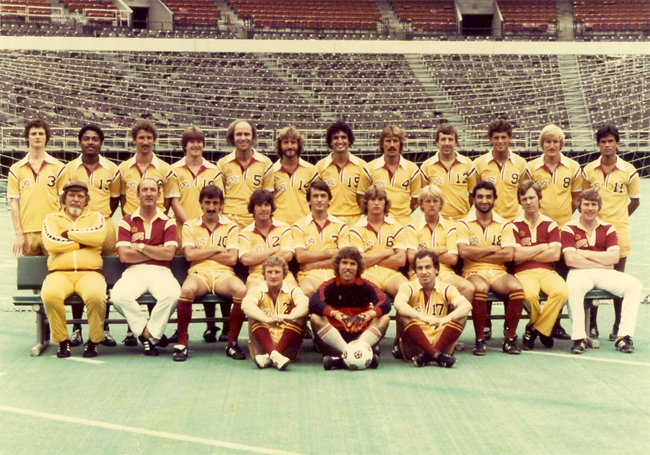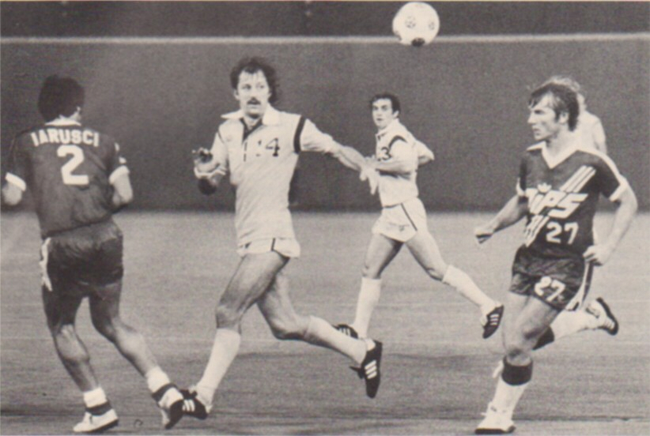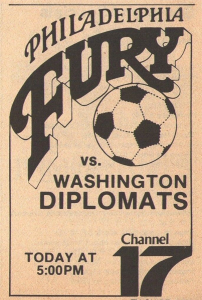
The Frank Worthington debacle
Although much improved, the Fury remained an inconsistent side. Through April, the team was 2-4. However, help was on the way with the arrival of Ball and the acquisition of another goal scorer, Frank Worthington, on loan from Bolton.
Worthington finished the 1978-79 season as the leading scorer in the English First Division (today’s Premiership) with 21 goals, and departing general manager Bob Ehlinger’s last good move was to secure his services, beating out Detroit Express in the process (as the Express also had Trevor Francis, the explosive might of that duo would have been a thing to see).
Worthington was due to arrive in Philadelphia in May. However, acting General Manager Sam L’Hommedieu—whose background was in theater—never got around to consummating Ehlinger’s deal with a signature. As a result, Dallas Tornado—helmed by ex-Atoms head coach Al Miller—swooped in and inked the striker.
With a flagship franchise sure to die on the vine as a result of the debacle, NASL Commissioner Phil Woosnam rode to the rescue and ordered that Worthington report to the Fury.
Worthington was worth the wait, as he scored a goal to compliment two by David Robb in his Philadelphia debut on May 12.
Limping along
Alan Ball, on the other hand, proved to be relatively ineffective. As a result, he was traded to Vancouver, where he rebounded to lead the Whitecaps to the 1979 NASL Championship, being named MVP of the Soccer Bowl that year.
By Memorial Day, rumors were starting to pop up that the club would leave town after the 1979 season. Louisville, of all places, was said to be the location. The rumors would soon stop when the Fury inked a “cooperation agreement” with the city’s phenomenally popular indoor soccer team, the Philadelphia Fever. “We have a new theme,” said Fury co-owner Peter Rudge, “‘Fury Glory.’”
The season continues
Worthington was a reluctant addition, and Ball was a flop. However, the Fury had better luck in a trade to shore up their defense. Just before the July 7 trade deadline, Philadelphia acquired Bob Rigby from Los Angeles (who had sold the keeper to Tulsa a day earlier, only for the deal to fall through). The popular ex-Atom immediately re-established himself as a fan favorite (although his debut left a lot to be desired, as you can see in this video).
Robb ultimately finished among the league scoring leaders with 16 goals and 20 assists, with Worthington adding 10 and Pat Fidelia, continuing his phenomenal super-sub role, netting 9 goals. Unfortunately, almost no one noticed–the team averaged an anemic 5,624 per match, dead last in the league.

Sudden success
However, the team suddenly managed to capture the city’s imagination in the playoffs. After once again squeaking in with a 10-20 record, the team shocked the league by sweeping the Houston Hurricane, the American Soccer Conference’s top team, in a two game playoff.
As a result of this unexpected turn of events, the Fury were without a place to play their home match in the ASC quarterfinals; the Phillies were booked for a long homestand, so Veterans Stadium was unavailable. With nowhere else to go, the Fury moved their match to Franklin Field.
The move turned out to be a blessing. Veterans Stadium, like most facilities built to accommodate both baseball and football, was an abysmal place to watch a soccer game, totally devoid of charm or atmosphere. Franklin Field, on the other hand, was a traditional oval stadium, providing excellent sight lines.
A combination of the superior facility and excitement over the Fury’s playoff run led 10,395 fans to Franklin Field to see the team take on the Tampa Bay Rowdies. The fans saw Fidelia and Worthington score goals, but the Fury lost the match to Tampa Bay in a shootout after the teams were tied after regulation and overtime (click here for video).

The Fury were bounced out of the playoffs two days later, losing to the Rowdies 1-0 before a national television audience courtesy of ABC (click here for video).
Still, enthusiasm ran high at the conclusion of the 1979 season. That enthusiasm reached a fever pitch with the announcement that Eddie Firmani, the greatest coach the NASL had seen at that point and the holder of three NASL championships with two different teams, had been hired to coach the club. Ironically, Firmani’s arrival would ultimately doom any chance the team had of succeeding in Philadelphia.
Exit the Fury
The first year of the new decade was a make-or-break one for the Fury. However, the club entered the year with much optimism. Along with the hiring of Eddie Firmani (and ex-Atom George O’Neill as assistant coach), the team could look forward to a nucleus that included Bob Rigby, newly-acquired ex-Atom and Cosmo Bobby Smith, 1979 NASL Defender of the Year John Dempsey, Fran O’Brien, and Tony Glavin. The Fury also acquired Kensington native Dave McWilliams from the Tampa Bay Rowdies, adding another local connection. In addition, the team could look forward to another year of Pat Fidelia’s exploits.
And, of course, the fans could look forward to another year of David Robb’s goal scoring feats. However, new head coach Firmani would soon reveal himself to be a raging egotist. One of his first moves was to summarily dispatch Robb to Vancouver for $80,000 cash. Thus, in one fell swoop, any chance of maintaining the fan interest generated by the 1979 playoff run disappeared.
(Thirty-two years later, another megalomaniacal Philadelphia coach would dispatch a hugely-popular leading scorer to the Vancouver Whitecaps for next-to-nothing. History does nothing if not repeat itself.)
Firmani assured all that would listen that Robb would barely be missed, since two of his “discoveries,” Holland international Bob Vosmaer and Ossama Khalil from Egypt, would develop into major goal scorers. The fact that Philadelphia fans were not thrilled their hero had been replaced by two players whose names many of them could not even pronounce was apparently lost on the club’s rock-and-roll ownership, as well as on new general manager Tom Fleck. Adding to the Fury’s woes was that Frank Worthington’s English club loaned him out to Tampa Bay for 1980, leaving the club without both of its top goalscorers. (As it goes, Worthington was an utter bust with the Rowdies in 1980).
Firmani had even higher aspirations, but ran up against an ownership group not eager to spend cash. He was bitterly disappointed when the Fury did not lift a finger after 1979 NASL MVP Johan Cruyff became available when new owners in Los Angeles did not want to deal with his salary. “Yes, I wanted Cruyff very much,” Firmani told Fury beat-writer Tim Panaccio, “[but] I realize the resources are not the same here [as with the Cosmos].”
The team also ignored the fact that Franklin Field provided a really good atmosphere for soccer, and again played in cavernous Veterans Stadium.
The Fury were dead on arrival in 1980. Fidelia suffered a severe injury early in the season, and Khalil never found his legs with the team. Starting the season 1-7, and drawing only 9,574 fans to the home opener, it was abundantly clear that the team’s days in Philadelphia were numbered. As early as July rumors of a sale and move to Montreal hit the streets. By August it as confirmed that Molson Breweries had purchased the club and would move it to Canada in 1980.
The team finished the season at 10-22, missing the playoffs for the first time in its brief history. The attendance average for the season was an embarrassing average of 4,778 per game. Khalil netted one goal in 20 matches; this may have reflected the quality of the team rather than the player, however, as the Egyptian international scored 12 goals in 15 games the following season with California Surf.
Vosmaer was a better pickup, grabbing 7 goals and 8 assists in 22 games to lead the team in scoring. One of those markers was a 1980 NASL Goal of the Year candidate, which you can see here at the 5:24 mark. The Indonesian-born midfielder would remain in America throughout the decade, plying his trade in the U.S. indoor leagues.
Epilogue
Playing with essentially the same roster as in 1980, the Montreal Manic averaged 23,704 fans a game in 1981, and drew over 50,000 fans to its playoff matches.
While the Philadelphia Fury were a prime example as to why the NASL collapsed–with absentee owners spending foolishly and lacking commitment to the community and the long haul—they were not alone in committing those sins. However, they were the biggest market team to do so, providing a stronger smell of failure than emanated out of other dismal markets like Memphis. Five years after the demise of the Fury, the NASL itself would be done.
In 2014, a semi-pro team in the (fourth) American Soccer League copped the Philadelphia Fury name and logo, even as it played in South Jersey.
A version of this article first appeared on December 4 at The Philly Soccer Page.
